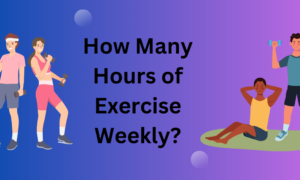Sticking to a workout routine is one of the most common challenges faced by people trying to improve their health. Motivation can fluctuate, schedules get hectic, and fitness goals sometimes feel far off. The key to long-term success often lies not in intensity or duration but in choosing a workout style that naturally fits your personality and lifestyle.
Understanding which exercise format promotes better adherence is essential for creating a routine you can actually maintain. Whether it’s group classes with high energy or solo workouts in a quiet home gym, the best approach is one that keeps you engaged consistently.
Why Adherence Matters More Than Intensity
Before we get into specific workout types, it’s important to understand why adherence is the most important factor in achieving fitness goals. Short bursts of intense effort won’t lead to lasting change if they aren’t repeated regularly. Consistency is what reshapes habits, improves health markers and physical well being over time.
The Psychology of Commitment
When a workout becomes part of your lifestyle, the need for daily motivation decreases. Building routine behaviors taps into habit formation which is more reliable than waiting for bursts of willpower. Exercise adherence depends on whether the experience feels rewarding and accessible.
Progress Through Repetition
Fitness gains are cumulative. Whether the goal is strength, weight loss or mental clarity, consistent repetition produces results. The most intense training plan will fail if it’s abandoned within weeks. Sustainable fitness routines are those you can realistically maintain.

Exploring Different Workout Styles
Every workout style has its pros and cons depending on personality, schedule and goals. Finding the right match increases the chances of showing up consistently which is what drives success.
Group Classes
Group fitness classes create structured, social environments. With a set schedule and a motivating instructor they often appeal to people who thrive on routine and social energy. From spin to Zumba the variety helps keep things fresh and interesting.
One-on-One Personal Training
Working with a trainer offers accountability and custom guidance. This structure benefits those who want personalized plans or have specific goals. Trainers can adjust the difficulty level and ensure proper form, reducing injury risk and improving results.
Solo Gym Sessions
Exercising alone in a gym allows for flexibility and focus. For people who value autonomy and solitude this style supports independent goal setting. The environment can be motivating for self driven individuals who like to control their routine.
At-Home Workouts
Convenience is the biggest advantage of at-home workouts. Whether using bodyweight exercises, online videos or compact equipment this option removes travel time and lowers the barrier to entry. It’s a good fit for people with tight schedules.
Matching Style to Personality
Personality traits heavily influence how likely someone is to stick with a workout plan. Recognizing what energizes or drains you can help steer your choices toward sustainable fitness options.
Extroverts vs Introverts
Extroverts may prefer group workouts where social interaction fuels motivation. In contrast, introverts might feel more comfortable and consistent with solo or at-home workouts. The setting impacts how enjoyable the experience feels over time.
Routine Seekers vs Variety Lovers
People who enjoy predictability may stick with gym routines or personal training. Those who crave novelty might favor rotating class styles or streaming diverse workouts online. Tailoring structure to preference boosts engagement.
The Role of Convenience and Accessibility
No workout plan works if it’s logistically difficult. Accessibility plays a major role in long-term exercise adherence. People are more likely to follow through when the routine fits easily into their lives.
Location and Timing
Long commutes to gyms or class times that conflict with work schedules often lead to dropped routines. Choosing a format that aligns with your daily rhythm increases follow-through. Convenience removes friction from the decision to show up.
Cost Considerations
Budget also impacts adherence. While some thrive with expensive boutique classes, others may find that cost-effective online workouts or public fitness options are more sustainable long-term. Affordability is a key part of fitness habit formation.
Building Motivation Over Time
Even with the right format, motivation still fluctuates. Learning how to maintain momentum through inevitable lows is part of the long-term adherence equation.
Setting Short-Term Goals
Breaking down fitness objectives into manageable milestones keeps progress visible and rewarding. Each mini goal reinforces the habit and renews excitement, especially when progress slows.
Celebrating Consistency
Tracking attendance or workout days can shift focus from outcome to effort. Celebrating streaks or small wins helps reframe success and makes it easier to keep going, even when results seem delayed.
Adapting Through Life Changes
Life events like job changes, relocation, or parenthood can disrupt fitness routines. Choosing a workout style that allows for flexibility can help navigate these transitions while staying active.
Scalable Routines
Fitness options that scale with your time or energy are easier to sustain. On-demand workouts, flexible gym memberships, or walking-based goals can adapt to temporary challenges.
Building a Backup Plan
Having a go-to alternative workout when plans fall through prevents long breaks. Whether it’s a short home session or a weekend class, backup routines support consistency across life phases.
Emotional Connection to Movement
People stick with what feels good. Whether it’s the feeling of accomplishment after a workout or the joy of dancing in Zumba, positive associations build habits.
Enjoyment Over Duty
Exercise that feels like a chore doesn’t last. Find a workout that feels fun or meaningful and you’ll be more likely to make it a lifetime habit.
Community and Connection
Being part of a fitness community creates emotional ties that get you to show up. Whether in person or virtual, these bonds turn workouts into social rituals that support adherence.

Tech and Tracking for Motivation
Digital tools can support long term fitness adherence by making goals visible and progress measurable. For some data is motivating. For others reminders and scheduling apps reduce forgetfulness.
Fitness Apps and Wearables
Tools like fitness trackers and mobile apps give real time feedback and accountability. Many apps offer guided workouts, social challenges or performance history that reinforces consistent behavior.
Online Coaching and Programs
Subscription based platforms with structured plans and remote coaches offer flexibility with oversight. These are for people who want instruction without leaving home and help you stay on track over time.
Conclusion
Long-term fitness success doesn’t come from the hardest workout. It comes from the one you’ll actually do. Understanding how different workout styles align with personality, lifestyle, and emotional preferences makes it easier to stick with the routine. Whether you’re a solo gym-goer, a fan of online videos, or a social butterfly who thrives in group classes, the key is finding what works for you. Sustainable fitness is not about doing more. It’s about doing what fits, and doing it often enough to make a lasting difference.























